Timeline
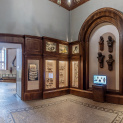
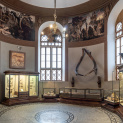
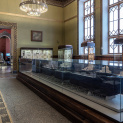
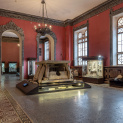
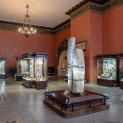
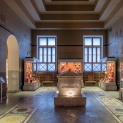
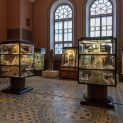

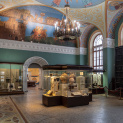
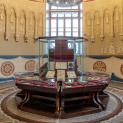
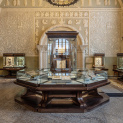
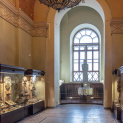
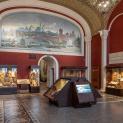
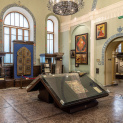
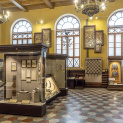
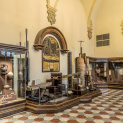

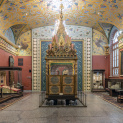
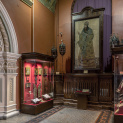
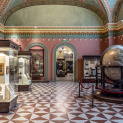
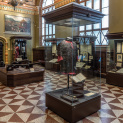
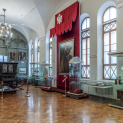
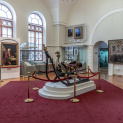


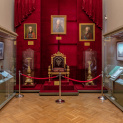
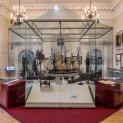
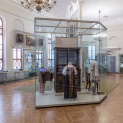

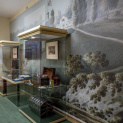
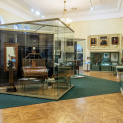
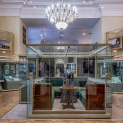
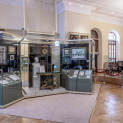
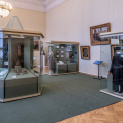

The appearance and distribution in Eurasia of the first representatives of the genus Homo – Pithecanthropus and Neanderthals. Ice age. The first stone tools. Expansion of populated areas. The emergence of modern human type, Homo sapiens sapiens. The development of sophisticated techniques of stone and bone. Construction of dwellings. The birth of primitive art: sculpture, painting, drawing. The domestication of dogs. The end of the ice age. The development of the fishery, the invention of the bow. The beginning of the use of clay for the manufacture of utensils.
The stone age is replaced by the bronze age - the time of revolutionary technological discoveries, the resettlement of peoples, the emergence and spread of metallurgy associated with the processing of copper, bronze, gold and silver.
The mastery of a new material is iron. Settling in the vast territories of Eurasia tribes of nomads – Scythians. The Scythian-Siberian world. The Scythian Triad. Domination in the steppes of warriors-horsemen. Sarmatian invasion of the Northern Black Sea coast. Great migration of peoples. The invasion is ready, the Huns. "Barbaric States". Formation of new ethnic communities.
The call to Novgorod "to the reign of the Varangian-Rus" Rurik and his brothers in 862. Oleg's trip with Prince Igor from Novgorod to Kiev 882, the unification of Russia. Hikes of Russian princes to Constantinople 911 and 944 years. Vladimir's reign, acceptance of Christianity in Russia, zlatnik – the first Russian coin, "Russian Truth" of Prince Yaroslav the Wise. The emergence and flourishing of ancient Russian cities as craft and shopping centers: Kiev, Novgorod, Smolensk, Polotsk, Chernigov, Rostov, Vladimir. Congress of Russian princes in the city of Lyubech 1097, the "disintegration" of a single Old Russian state into specific principalities. Princely feuds. Appearance of the Polovtsians at the borders of Rus in the middle of the XI century. The struggle against the Polovtsians, the campaigns of the Russian princes in the Polovtsian steppe. The foundation of Moscow in 1147. The flourishing of the ancient Russian culture on the eve of the Mongol invasion: architecture of temples, masterpieces of icon painting, hand-written books, jewelry and applied art.
The era of the second quarter of the 13th – early 16th century, a turning point that was of great importance not only for Russian but also for European history. This is the time of the successful struggle of the Russian people for their independence, the revival of national traditions; the growth of productive forces and the rise of culture – the time of the creation of a single state with its capital in Moscow.
In the XVI–XVII centuries the united Russian state finally formed, the supreme autocratic power of the Grand Dukes of Moscow and the kings of Russia was gradually affirmed, and a system of central and local government was being formed. The codes of laws reflected the establishment of the feudal foundations of the state.
The accession of the Volga region and the advance to Siberia led to a rapid expansion of the country's territory: the northern and eastern borders of Russia became the coasts of the Arctic and Pacific oceans. The southern borders of the state were strengthened.
The growth of the number of cities and the development of crafts, the formation of the all-Russian market, the gradual inclusion of Russia in the system of world economic relations are new phenomena in the economic life of the country.
Russia was completing the medieval period of its history. In the framework of the traditional world outlook, the culture of the New Age was born.
XVIII century in the history of Russia – the era of the birth and formation of the state, society and man of The new time. The country is expanding its borders, adding new territories, turning into an Empire, a powerful European power with a powerful regular army and Navy. This time of development of the absolutist state in Russia which occurred in the conditions of strengthening of serfdom and registration of a class system. The nobility becomes a support of the Supreme power. The birth and development of a new secular culture, science and education, the formation of national consciousness.
Russia, which entered the new century as one of the great European powers, continued to enlarge its territory, extending the borders in all directions. In the first half of the 19-th century serfdom and the system of estates restrained the socio-economic development of the country. However, the Great reforms of 1860–1870-s eliminated serfdom and cleared the way for rapid development of capitalism in Russia. In the 19-th century the capable society was formed; science developed rapidly, great literature, painting and music emerged.